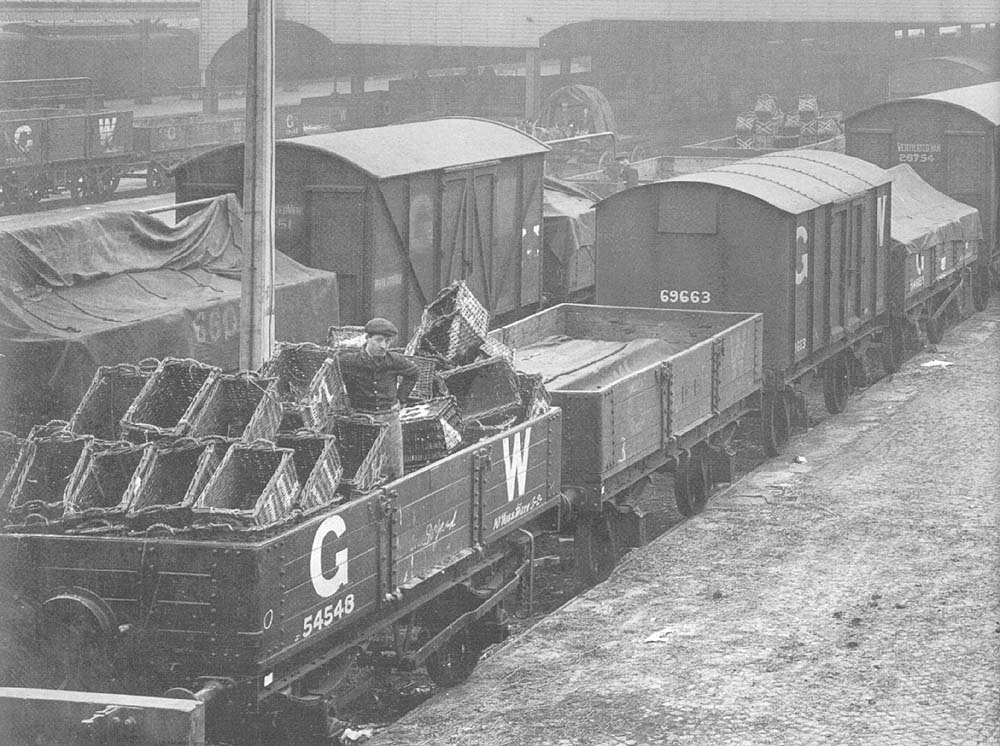 |
|
GWR Routes: Banbury to Wolverhampton
GWR Routes: North Warwickshire Line
Moor Street Station: gwrms758a
 |
A mixture of Great Western Railway open and van wagons on
the siding roads at Moor Street Station in May 1915. Note that at this time,
most wagons only had brakes on one side. In 1911 the Board of Trade eventually
issued an Order under the Railway Employment (prevention of Accidents) Act 1900
for all railway wagons (not exempted) to be fitted with brake levers on both
sides. This applied to all new wagons and originally required existing wagons
to be modified in fifteen years, but this was later deferred to end of 1938.
The Great Western Railway identified that they still had 18,784 single brake
wagons in January 1927. The nearest wagon is a 4 plank, 10 ton, Open A wagon.
No 54548 was one of a batch of 200 open wagons built circa 1900 to Lot No 12.
Originally it would have had grease axle boxes and no sheet supporter bar, but
it has been subsequently modified with oil axle boxes and a sheet supporter.
The bar of the sheet supporter in its upright position held up the tarpaulin
sheet, which prevented water from puddling and leaking on to the load. The
sheet supporter was attached to the two ends of the wagon and could be pivoted
to the side so as not to interfere with unloading operations. The use of wicker
baskets for transporting goods was common at the time and they would be
returned to the supplier for reuse.
The adjacent unidentifiable 4 plank wagon is a similar
design, but has its original grease axle boxes and the sheet is covering a load
within the wagon, so it probably is not fitted with a sheet supporter. The
Great Western Railway used the telegraphic code ‘Mink’ to describe a
covered goods wagon or van. In an attempt to construct more durable wagons they
built 4783 covered wagons with metal bodies to the same basic design between
1887 and 1901, which lead to the term ‘Iron Mink’. No 69663 was one
of a batch of 100 Iron Minks built to Lot L255. The bonnet ventilator on the
end of this particular wagon is of the extended type introduced in April 1899
and the last wagon in the lot batch was built in August 1899. Originally these
Iron Minks were built to carry a maximum load of 9 tons, but their carrying
capacity was subsequently increased to 10 tons circa 1904. The last wagon in
the line is 28 foot, 6 inch long, ten ton, Ventilated Mink D No 28754, which
was part of Lot L510. Fifty of these long covered wagons were built on this lot
number to diagram V9 in 1906. They had a twenty foot wheelbase, vacuum brake,
instanter screw couplings and two doors on each side. The Mink D’s from
this batch also had two shuttered louvers in each end panel for controlling the
ventilation of the wagon.
Robert Ferris
 back back

|
